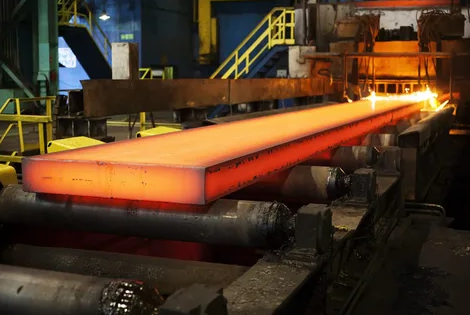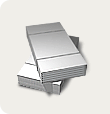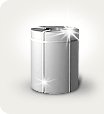The development of a new, environmentally friendly steelmaking technology is helping to alleviate concerns about a predicted bottleneck in the iron ore supply chain.
A new report from the Institute of Energy Economics and Financial Analysis (IEEFA), Solving Iron Ore Quality Challenges for Mild Steel Production, looks at a number of new industry innovations that could accelerate the transition from conventional blast furnace technology to lower-emission technology. Emissions Steel production based on direct reduced iron (DRI).
DRI does not use metallurgical coal but currently relies on high quality DR grade iron ore (purity above 67%) which is in short supply.
However, report author Simon Nicholas points to new combinations of technologies that allow direct reduction processes to use more abundant blast-furnace grade ore (typically 62–65% pure) in mild steel production, thereby eliminating the need for high-grade steel. iron ore.
“It is encouraging that we have found that some steelworkers are now doing research and planning,” Nicholas says.
“This will potentially mitigate the shortage of DR grade iron ore by facilitating the expansion of low-emission steel technology that does not use metallurgical coal,” Nicholas says.
German conglomerate Thyssenkrupp intends to replace the first of its blast furnaces with DRI units combined with a submerged arc furnace (SAF) in 2025, allowing it to use blast-furnace iron ore in the process.
ArcelorMittal, the world's second largest steelmaker, is also planning to implement a similar DRI-SAF combination.
In Australia, BlueScope Steel is working with Rio Tinto on a similar combination of DRI with a smelting stage that will enable the use of Rio Pilbara blast furnace iron ore in DRI processes.
Meanwhile, Italian steel technology supplier Tenova is also developing new technology combinations to produce direct reduced iron using low-grade blast-furnace pellets.
The developments contradict claims by BHP, one of the key suppliers of blast-furnace iron ore and metallurgical coal to the steel industry, which has said there is simply not enough high-quality iron ore suitable for direct reduction production. to meet global demand for steel.
BHP believes that most of the world's steel will continue to be produced by the traditional blast furnace-oxygen furnace route using coal in 2050. a zero-emission path.
Nicholas said that BHP's stance "risks making it underperform in the decarbonization industry."
And the move to DRI raises questions about BHP's long-term commitment to metallurgical coal.
“Any significant global shift from blast furnaces to direct reduction processes will impact demand for metallurgical coal,” says report co-author Sourush Basirat. “The increased use of direct reduction technology should be of particular concern to companies like BHP, as the world's largest producer of marine metallurgical coal,” he adds.
“Major iron ore producers should start to rethink their long-term strategies and prepare to supply more of their products to direct reduction steelmaking processes.
“Pathways that can use lower grade ore in direct reduction processes could allow iron ore miners to increase their Scope 3 emission reduction ambitions.
“Given that technological transitions have a history of amazing speed, we may well see accelerating technology development begin to threaten the dominance of metallurgical coal in the coming years as the steel industry continues to innovate.”
DRI can significantly reduce steelmaking emissions by using green hydrogen produced from renewable energy electrolysis.
“Replacing the global fleet of blast furnaces with low-carbon steelmaking processes, including the use of renewable hydrogen, is a huge challenge, but solutions are emerging,” Nicholas says.
New technology promises to solve iron ore problem

|
|
Azovpromstal® 15 August 2022 г. 11:02 |





